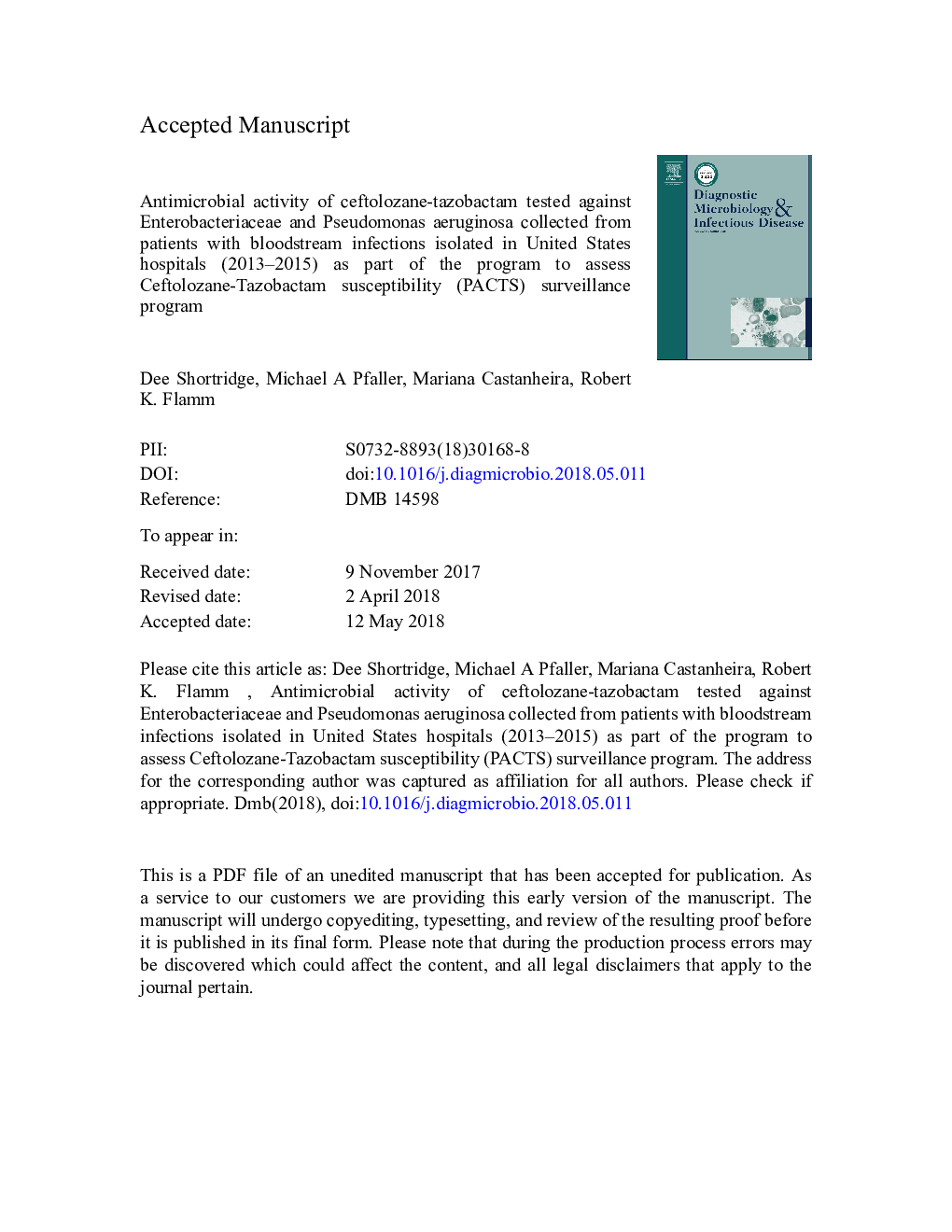| Article ID | Journal | Published Year | Pages | File Type |
|---|---|---|---|---|
| 8964058 | Diagnostic Microbiology and Infectious Disease | 2018 | 21 Pages |
Abstract
This study evaluated the in vitro activity of ceftolozane-tazobactam and comparators against 2647 Enterobacteriaceae and 355 Pseudomonas aeruginosa nonduplicate isolates collected from hospitalized patients with bloodstream infections in US hospitals from 2013 to 2015.Ceftolozane-tazobactam (95.5% susceptible), amikacin (99.2% susceptible), and meropenem (98.4% susceptible) were the most active against Enterobacteriaceae. For Enterobacteriaceae, 1.4% (nâ¯=â¯37) were carbapenem-resistant (CRE), and 10.2% (nâ¯=â¯271) exhibited an extended-spectrum β-lactamase (ESBL) non-CRE phenotype. The most common ESBL enzyme detected was blaCTX-M-15-like (nâ¯=â¯159). Whereas ceftolozane-tazobactam showed good activity against ESBL non-CRE phenotype Enterobacteriaceae (87.1% susceptible), it lacked useful activity against CRE strains. Ceftolozane-tazobactam was the most potent (MIC50/90, 0.5/1â¯mg/L) β-lactam agent tested against P. aeruginosa isolates, with 97.5% susceptible. Only colistin was more active (98.9% susceptible). Ceftolozane-tazobactam was the most active β-lactam agent tested against P. aeruginosa and demonstrated higher in vitro activity than available cephalosporins and piperacillin-tazobactam when tested against Enterobacteriaceae.
Keywords
Related Topics
Life Sciences
Immunology and Microbiology
Applied Microbiology and Biotechnology
Authors
Dee Shortridge, Michael A Pfaller, Mariana Castanheira, Robert K. Flamm,
